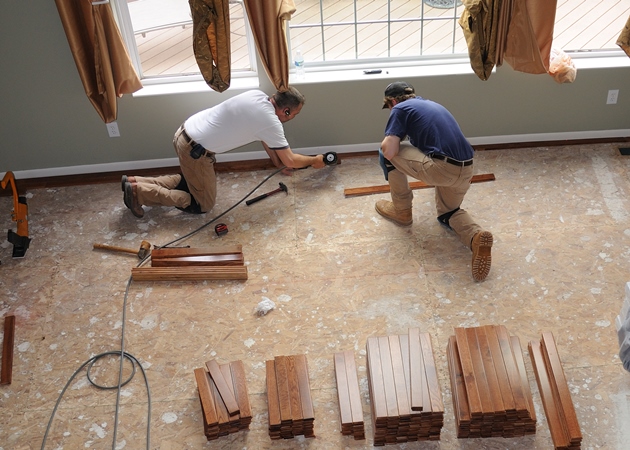The Pros and Cons of Hardwood Floor Installation
 Hardwood floor installation is a great way to decorate your floor and give it an enhanced appearance. There are do-it-yourself methods of installing hardwood floors, but a layman would always require professional assistance in getting the job done efficiently. There are certain steps that should be taken into consideration before installing hardwood floors in any home. This article will highlight some of these important steps as well as the pros and cons of hardwood floor installation.
Hardwood floor installation is a great way to decorate your floor and give it an enhanced appearance. There are do-it-yourself methods of installing hardwood floors, but a layman would always require professional assistance in getting the job done efficiently. There are certain steps that should be taken into consideration before installing hardwood floors in any home. This article will highlight some of these important steps as well as the pros and cons of hardwood floor installation.
Best Areas for Hardwood Floor Installation
Selecting the most appropriate area for the flooring is first and foremost when it comes to installing a hardwood floor. Clean up and level the area as you need to put up a sub-floor to avoid moisture and strengthen the hardwood floor. Damp areas should be avoided altogether for this purpose. Moisture is said to cause damage to hardwood and these floors should not be placed in bathrooms and kitchens. Outside temperature conditions also should be taken into consideration when installing a hardwood floor. Low quality wood used for hardwood floors has a good chance of contracting and expanding with the climatic changes. Hence you should use good quality wood or laminate the wooden floor to avoid some of these effects.
Protecting Your Hardwood Floor Installation
Hardwood delivers durable, clear, smooth, scratch proof floors to a home. Aluminum oxide is used to enhance and protect the durability of hardwood floors in some instances. This would help the floor to resist moisture and not fade away easily. Any type of surface could be used in installing a hardwood floor in your home. It doesn’t matter if the surface is concrete, vinyl or wood, a hardwood floor would enhance the beauty of such floors even further. Light oak, cherry and hickory are some of the most popular wood types used to manufacture hardwood floors in most homes.
Hardwood flooring could be laid out in a few hours compared other type of floors. They are quite affordable, and the maintenance costs are extremely low. Most of the branded materials used to lay hardwood floors claim a warranty for 25 or more years. It would be a great investment for the future as hardwood floors would naturally enhance the re-sale value of a home in leaps and bounds.
There are many advantages as well as some disadvantages of installing a hardwood floor. The main advantage is that it is easy to clean and maintain since dirt and other stains doesn’t stick to the hardwood easily. Hardwood doesn’t fade in color like carpets. The color will stick for a long time. Hardwood will not pose health risks due to dust and other allergens. Hardwood would not hold onto dust and other microorganisms like carpets do. If you are fed-up of a certain color, you can always change the color of the hardwood by repainting it, which cannot be done with carpet floors. The strength and durability are the other main advantages of installing a hardwood floor in your home.
The biggest disadvantage of a hardwood floor is the high cost involved in buying natural wood. High quality natural wood will definitely cost more than other synthetic flooring materials. Installing hardwood is time consuming since it has to be laid in strips. Most homeowners use professional assistance in this regard. You may have to incur extra costs in this area too.
The above mentioned are some important information and the pros and cons of hardwood floor installation.











 Recent Blog Posts
Recent Blog Posts

